7Artisans AF 27mm F2.8 Review
Dustin Abbott
April 25th, 2024

Just a month ago I released my first review of an autofocusing 7Artisans lens (all previous reviews had been of manual focus only lenses). The AF 50mm F1.8 was an interesting lens with a surprising number of premium elements for its relatively inexpensive price. But 7Artisans was immediately back with a new lens; in this case a radically smaller 27mm F2.8 autofocusing lens….this time for APS-C cameras. The new 7Artisans AF 27mm F2.8 is a surprisingly complete and competent little prime lens for a bargain price of just $129 USD. I’ve reviewed it on Sony E-mount, though I wouldn’t be surprised to see other lens mounts follow in the future. Is this a lens you should consider? Find out my thoughts in the video review below or by reading on…
Follow Me @ YouTube | Patreon | Instagram | Facebook | DA Merchandise | Flickr | 500px | X
Thanks to 7Artisans for sending me a review sample of this lens. As always, this is a completely independent review. *The tests and most of the photos that I share as a part of my review cycle have been done with the APS-C mode (26MP) of my Sony a7RV camera.
__________________________________________________________________________________________________
Designing for a smaller APS-C sensor has allowed 7Artisans to create a very different kind of lens here; one radically smaller than the 72mm (2.83″) in diameter and 104mm (4.09″) in length of the 50mm F1.8. The new lens is 64mm in diameter (2.51″) and just 48mm (1.89″) in length. It weighs just 172g (6oz), a far cry from the 421g (14.85oz) of 7Artisans last lens.
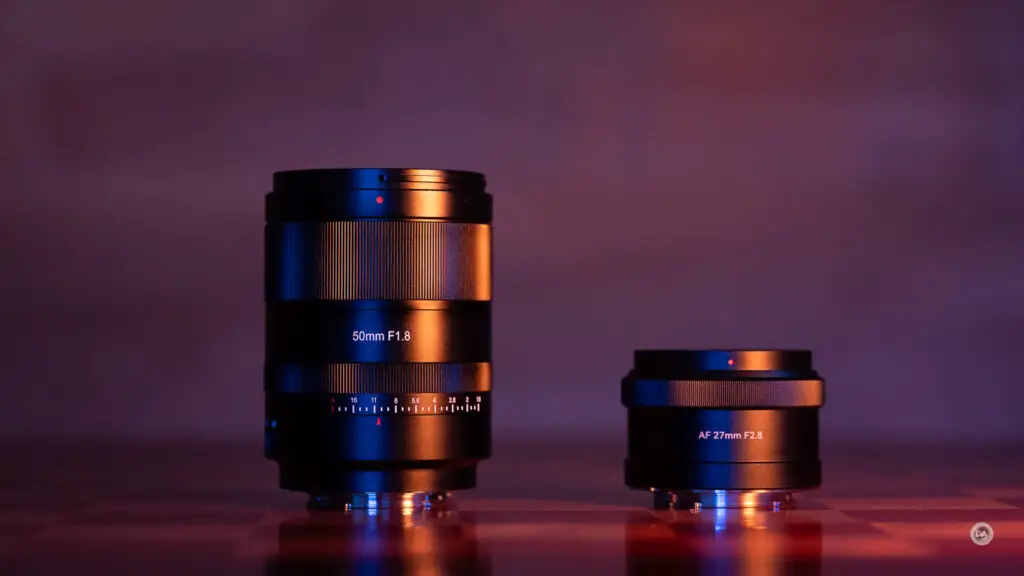
27mm is an odd focal length for full frame, but on APS-C it is one of my favorite focal lengths. This is roughly 41mm in a full frame equivalent (Sony’s APS-C crop is 1.5x), which makes it a nice compromise between a 35mm and 50mm lens. I love it as a walkaround or everyday focal length, as it captures images similar to the way that the eye sees them.
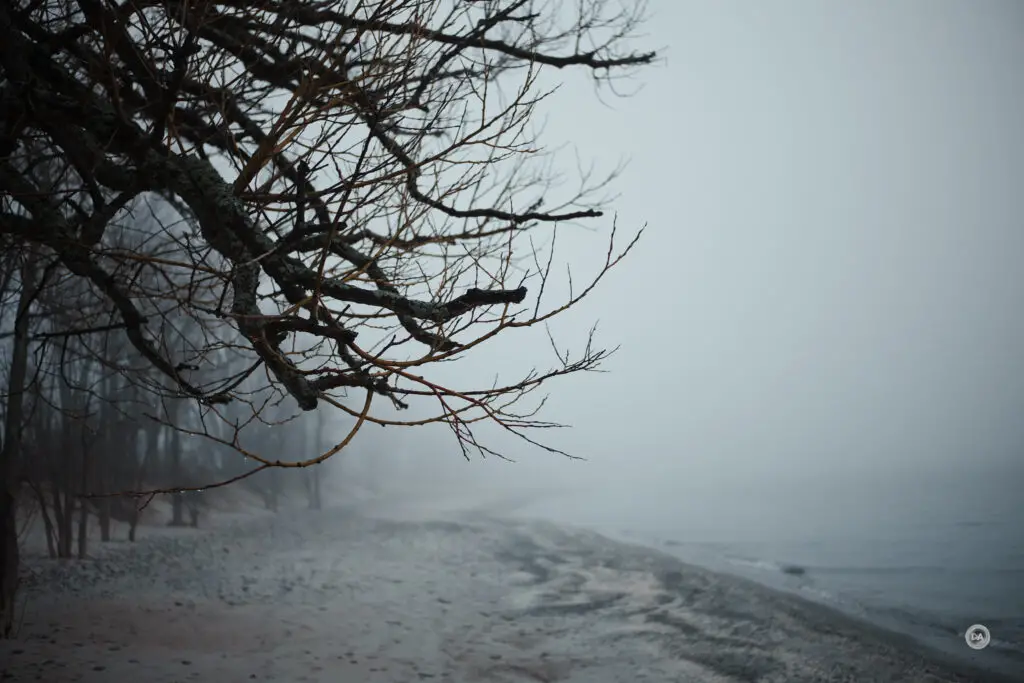
It’s really astounding how good of lenses we are getting from companies like 7Artisans at such an inexpensive price. One wouldn’t expect much from a lens costing just $129 USD, but I’ve been pleasantly surprised by pretty much all aspects of this lens. It’s surprisingly sharp even at F2.8, has solid autofocus, and has a build quality that is really pretty fantastic.

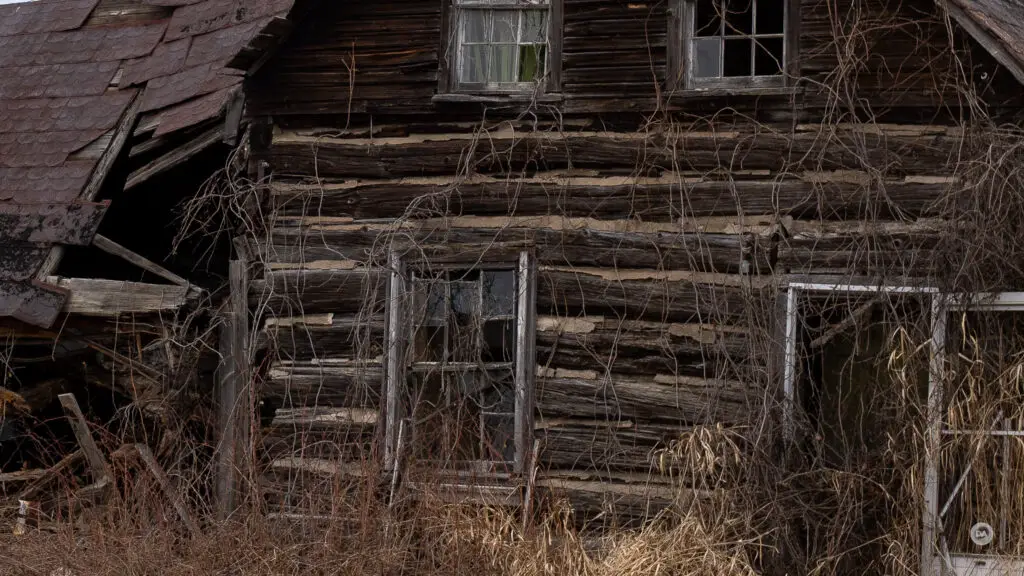
So is this a lens that you should seriously consider? We’ll explore whether or not that is the case in this review.
Build and Handling
As noted, this lens has a nicely compact size. I do my Sony E-mount APS-C tests on the APS-C mode of my Sony a7RV, as its 26MP in APS-C matches Sony’s a6700 for resolution. That means that I’m doing my test on a larger camera, but the AF 27mm is clearly small enough to work nicely even on the smallest of cameras.
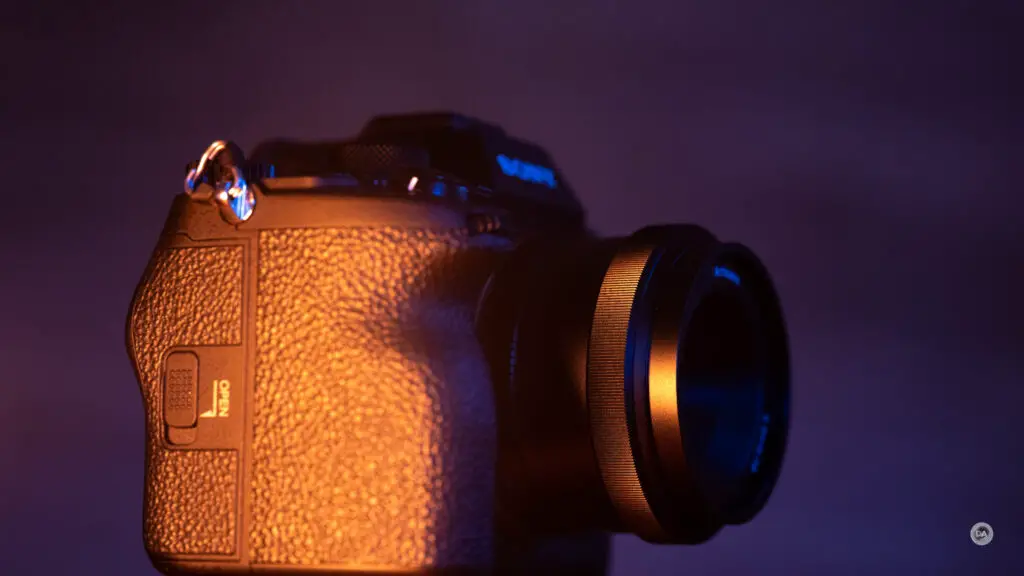
7Artisans included several features on the 50mm F1.8, including an aperture ring and AF/MF switch, but they’ve gone for a paired down, simpler lens here. You’ll note that the side of the lens is devoid of any switches or controls.
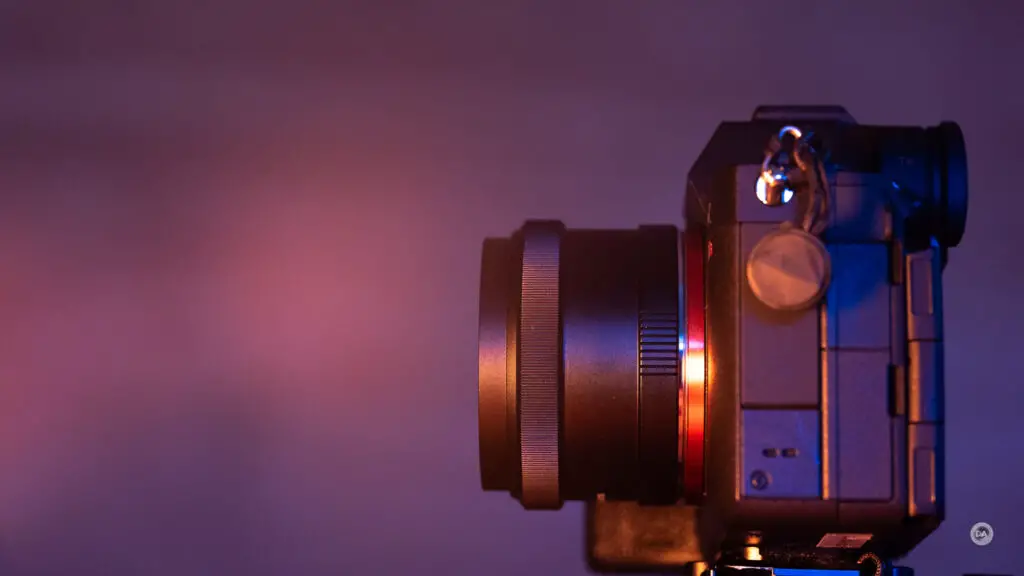
The lens barrel is made of metal, and it has a nice, anodized black satin finish. The lens design is very clean and elegant.
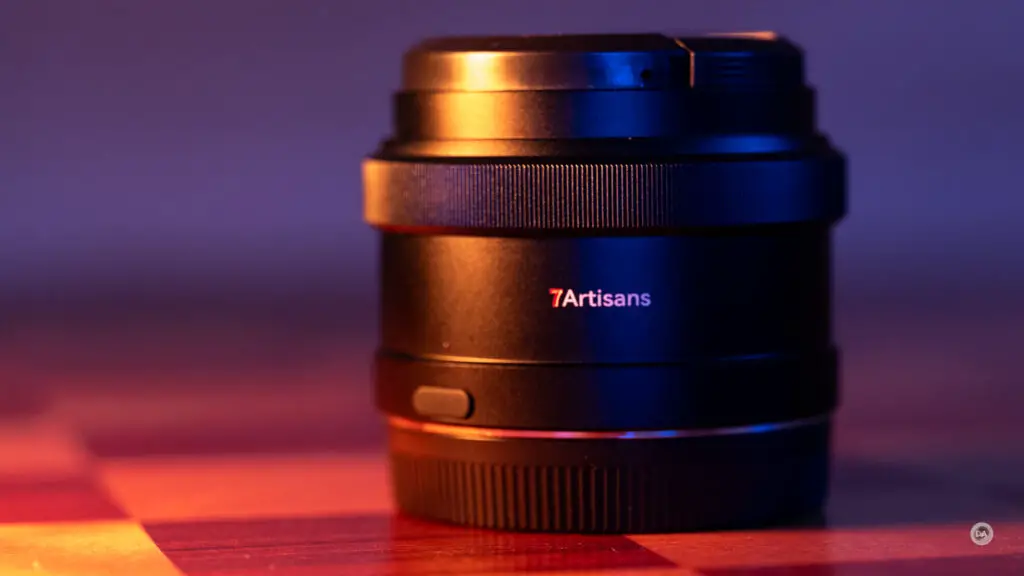
The one feature here is a USB-C port covered by a small rubber gasket. Be careful when pulling it out, as it is small and wouldn’t be hard to lose.
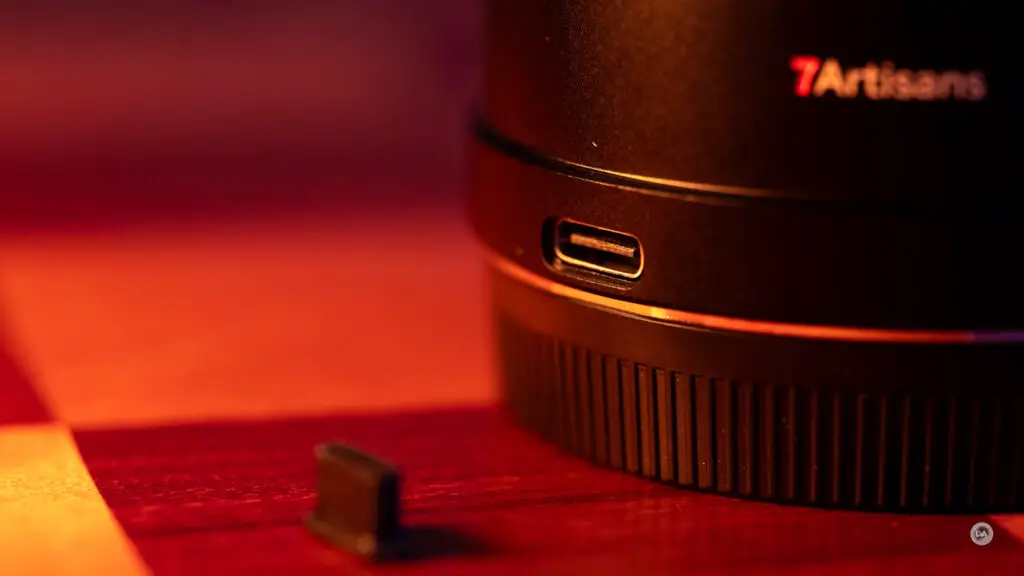
The USB-C port will allow for quick and easy firmware updates, which is very smart of 7Artisans considering that they are A) new to autofocus and B) a third party lens maker, so they may have to rely on firmware updates to maintain compatibility with cameras in the future. The lens does include a USB-C cable in the box in case you don’t have one.
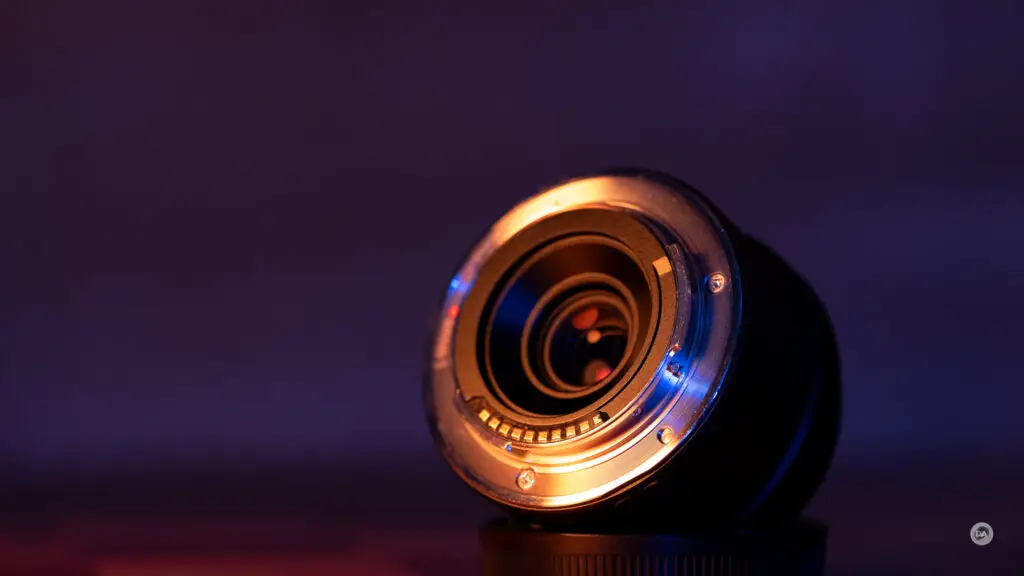
There is a metal lens mount but no weather sealing gasket, though that is clearly not an expected feature at this price point.
There also isn’t an included lens hood, which is unfortunate, as frankly the lens could use one.

Up front we have common 52mm filter threads.
Take a closer took inside and you’ll see six straight aperture blades.

In theory that should allow for nice sunstars, but I found the sunburst effect rather aggressive with the lens stopped down a bit.

The manual focus ring is main object on the lens barrel. 7Artisans has elected to make it raised rather than flush, which does make it easy to grab. It’s reasonably wide and is made of metal with fine ribbing. The damping is medium first and the focus simulation is quite good (mirrorless lenses are “focus-by-wire”, where input from the focus ring passes through the focus motor).
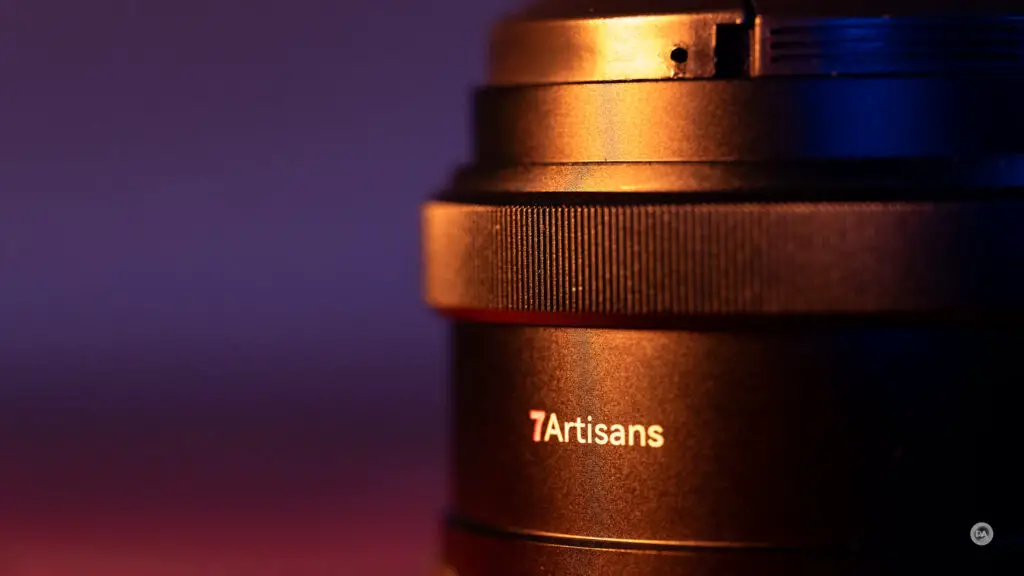
The feel of the lens and focus action is premium; nothing about that feels cheep.
The minimum focus distance is 30cm. I estimate the maximum magnification figure to be roughly 0.14x, which looks like this:
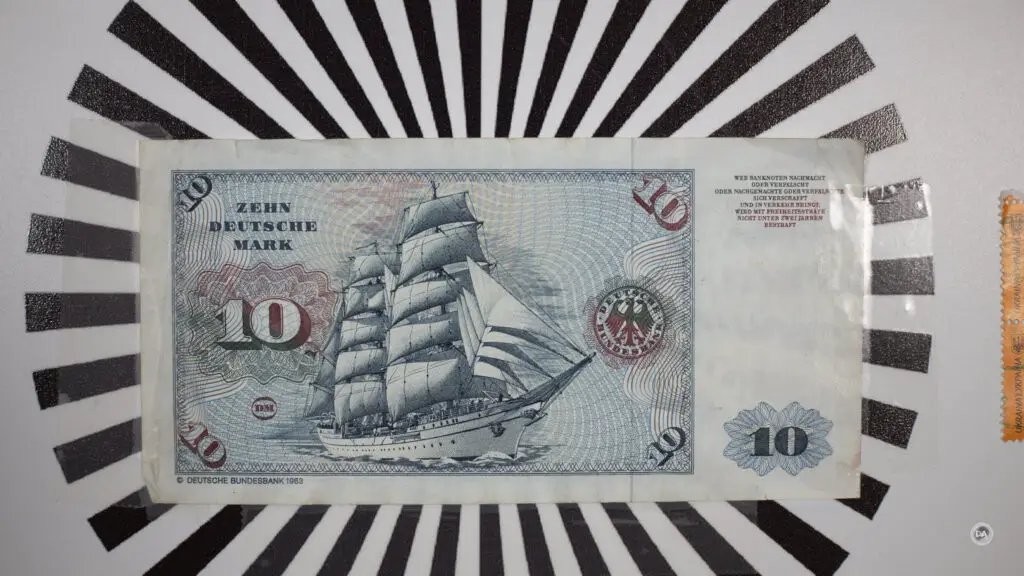
That’s close enough to be useful but not exceptionally so. Here’s a real world close shot of a pineapple.
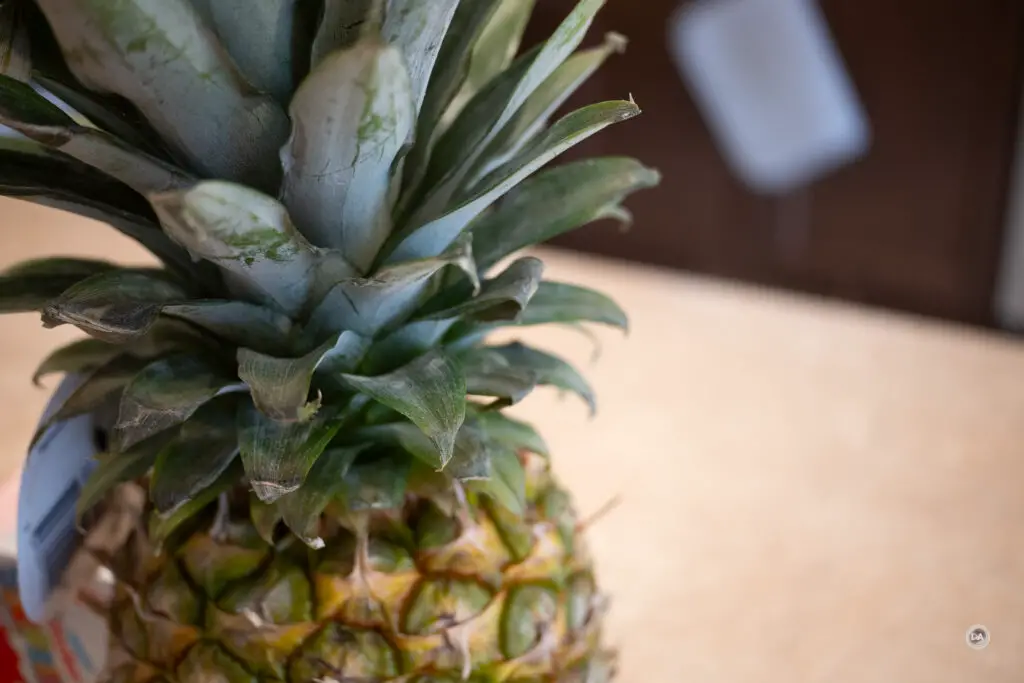
I did notice one quirk that manifests in a few ways. In Lightroom the focal length isn’t communicating correctly in the EXIF data, and I think that was a factor in communicating to the camera for setting the focal length for the camera’s stabilization system. I noticed I was getting a little more motion blur than expected in some images, so I tried manually setting the focal length instead of allowing the camera to automatically set it for Sony’s “SteadyShot”. This made a clear and obvious improvement.
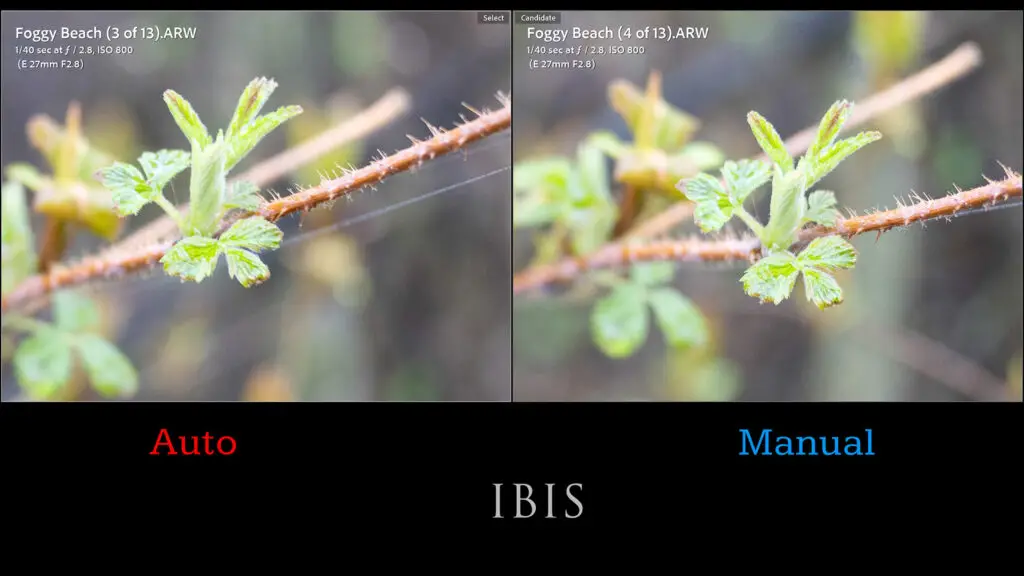
So a little tip – manually set the focal length for IBIS (if your camera is so equipped), and you’ll get more stable results.
The 7Artisans AF 27mm F2.8 is a simple lens, in many ways, but a well executed one. It feels much nicer than its bargain price tag would suggest.
Autofocus and Video
I can already tell a welcome improvement to autofocus performance from their first AF lens that I tested. Companies like this tend to learn fast, and it helps that this lens has a narrower maximum aperture and shorter focal length, putting a little less stress on its STM (stepping) focus motor.

Autofocus speed is actually quite good here. Not GM level good, but so fast that you’ll never think about it. The focus motor works smoothly and quietly. If I put my ear right up to the barrel, I hear a light shuffling sound of the focus group moving back and forth, but nothing loud enough to be picked by the camera microphone. The quality of focus felt good, too.
I took a series of photos of Nala rolling around enjoying the spring sun, and focus was nailed (and the lens is surprisingly sharp!)

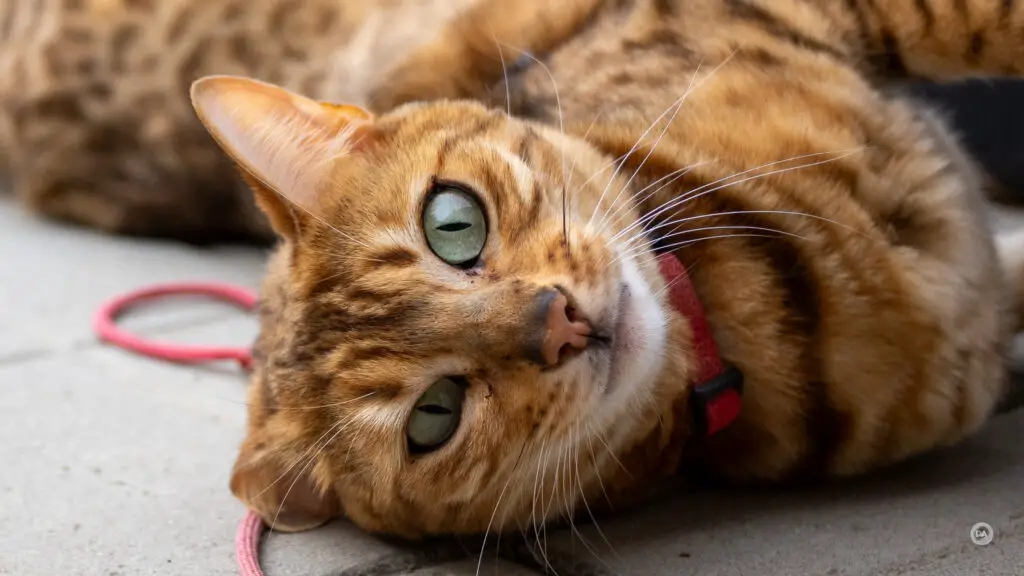
I didn’t notice any evidence of the focus drift I got with the 50mm F1.8 during bursts. Focus just seems more mature.
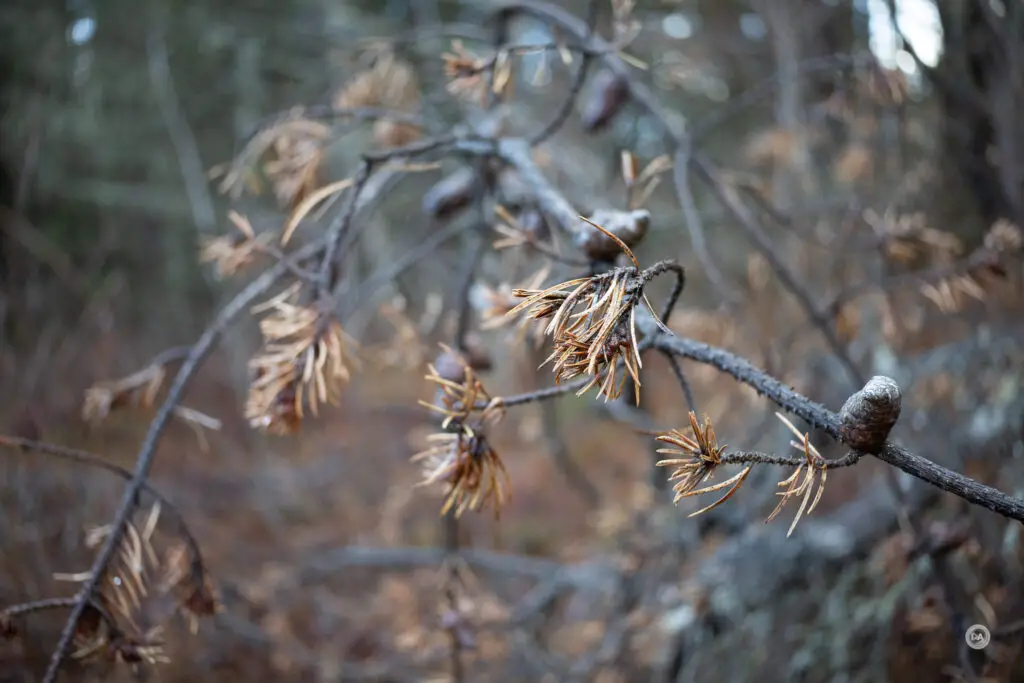
On the video front I found mostly good results. Focus pulls were smooth and quick with no visible steps, though there is definitely some mild focus breathing.
The 7Artisans AF 27mm did fine with my “hand test” however, where I alternately block the view to my face with my hand and then remove it. Focus transitioned nicely from my hand to my face.
I also had fairly good results with video clips where I slowly moved the camera to force change from one subject to another at varying depths of field. Focus transitions were fairly well damped, and I feel like this could be an interesting lens on a gimbal if you’re on a budget. It’s light, focuses with some confidence, and seems fairly mannerly for video AF. I shot a number of my YouTube video episodes with it and got very stable focus and a very nice looking picture.
Autofocus is definitely trending in the right direction for 7Artisans.
7Artisans AF 27mm F2.8 Image Quality Breakdown
The 7Artisans AF 27mmmm F2.8 has a simple optical design of 6 elements in 5 groups. The MTF chart shows a very sharp center, some mid-frame regression, and a bit of a rebound in the corners. We’ll see if that pattern holds up in our results.
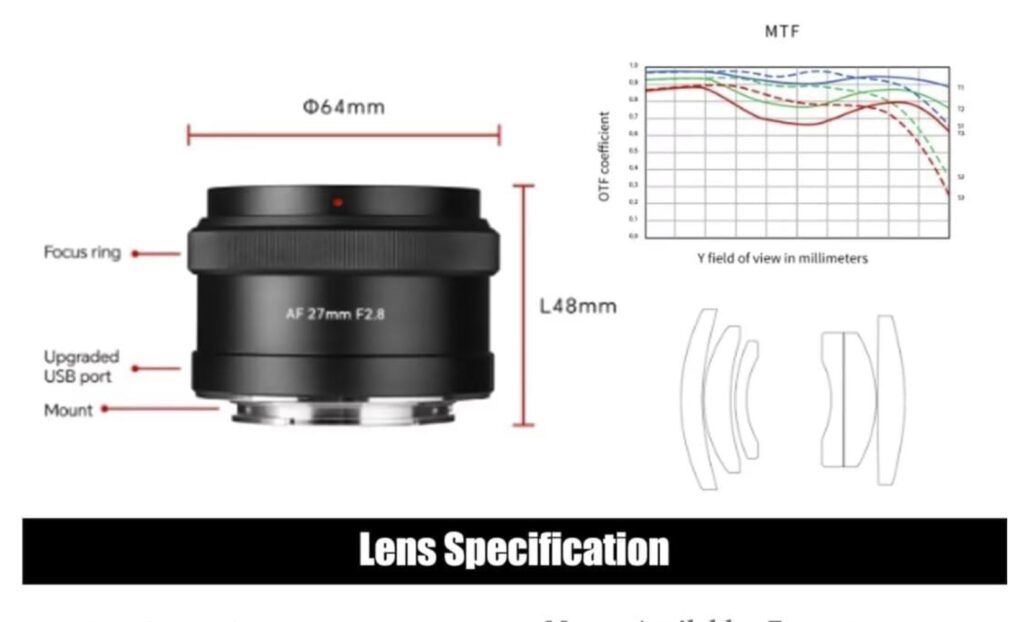
I would say that in general I was very impressed with the sharpness and contrast of the lens, though it has an interesting signature in some situations I’ll address in a moment.
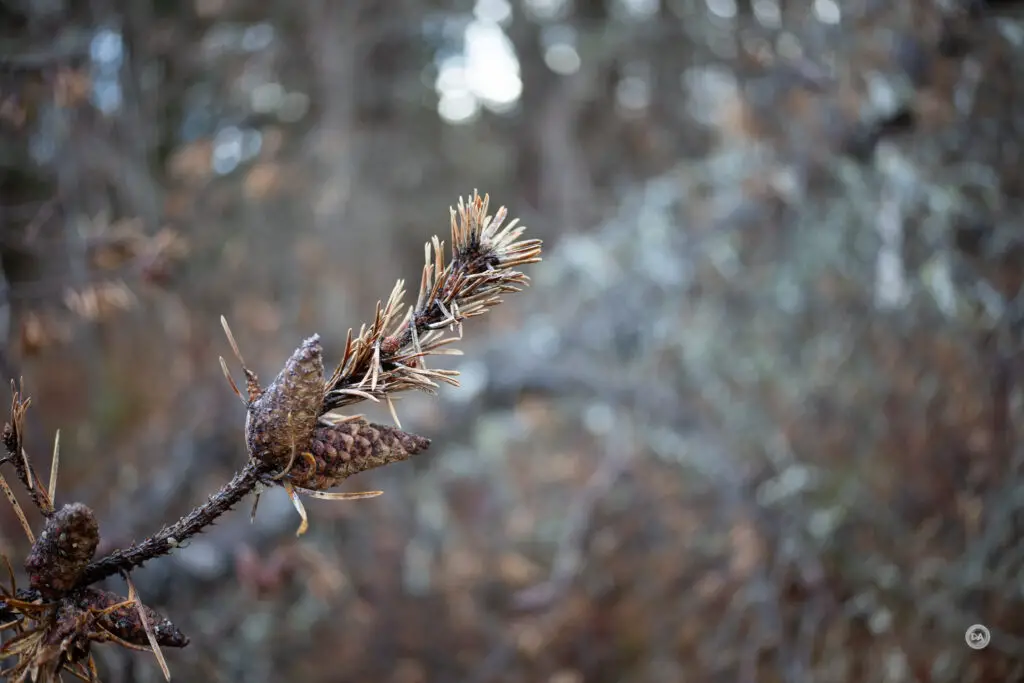

I didn’t really notice any kind of issue with longitudinal chromatic aberrations (LoCA) which show up before and after the plane of focus.
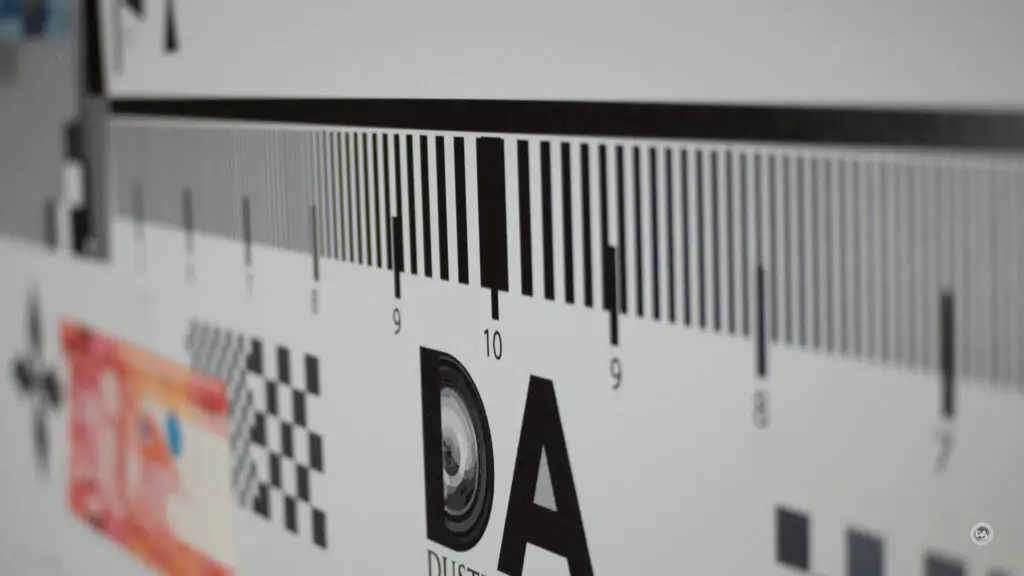
There’s also very little lateral chromatic aberrations visible in the transitions from black to white at the edges of the frame.
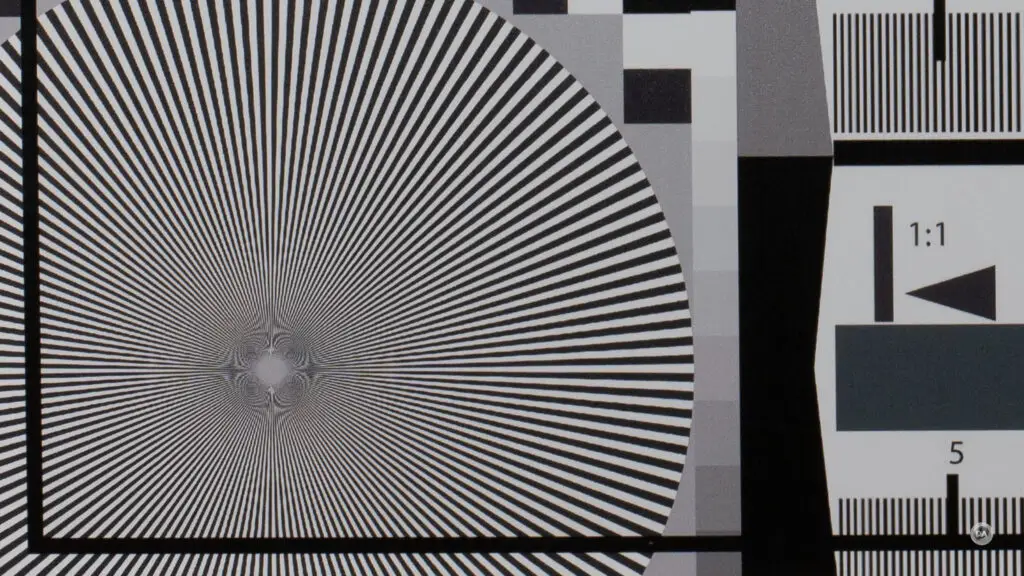
There is moderate amounts of barrel distortion and vignette present.
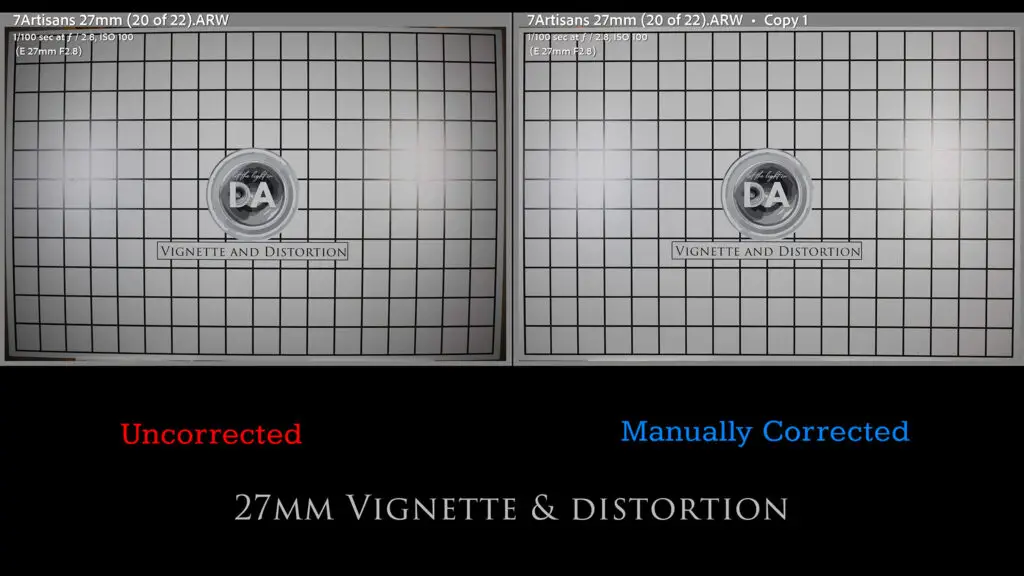
I corrected the barrel distortion with a +9 (nothing extreme) and about two stops of vignette (+61). I will note that vignette dramatically reduces by F4.
It seems like people inevitably are interested in seeing how much of the full frame sensor APS-C lenses cover. In this case, basically nothing more than what the typical APS-C crop covers. There is serious mechanical vignette if I switch to full frame.
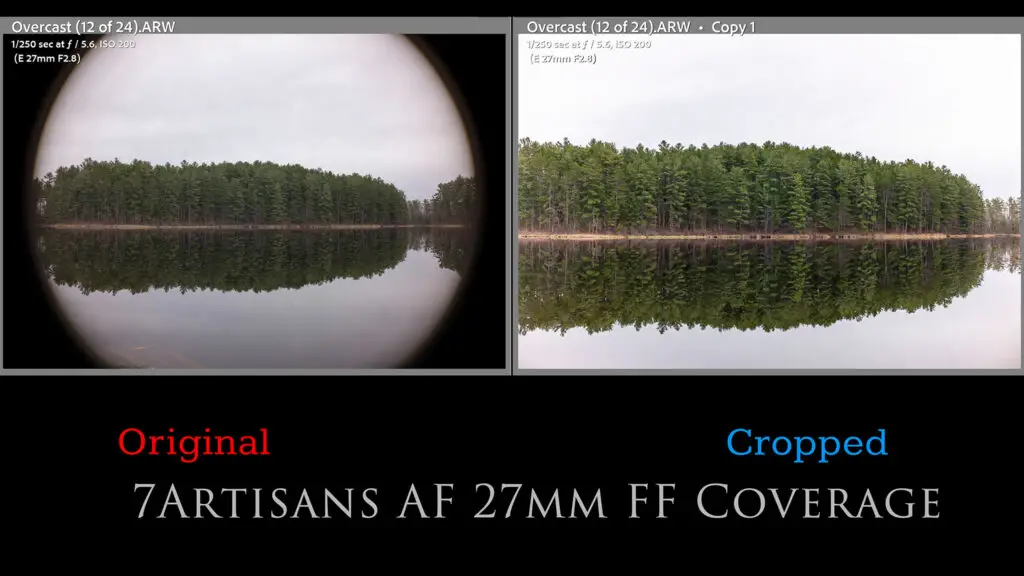
If I compare the out of camera APS-C crop to what I cropped from the full frame image, I find that the two crops are basically identical.

Bottom line: don’t buy this lens thinking that you are getting some cheat code to a bargain full frame lens!
So how about resolution and contrast? My tests have been done on a 26MP APS-C mode of my Sony a7RV. Here’s the test chart:

Here are F1.8 crops at roughly 180% from across the frame (center, mid-frame, and lower right corner).
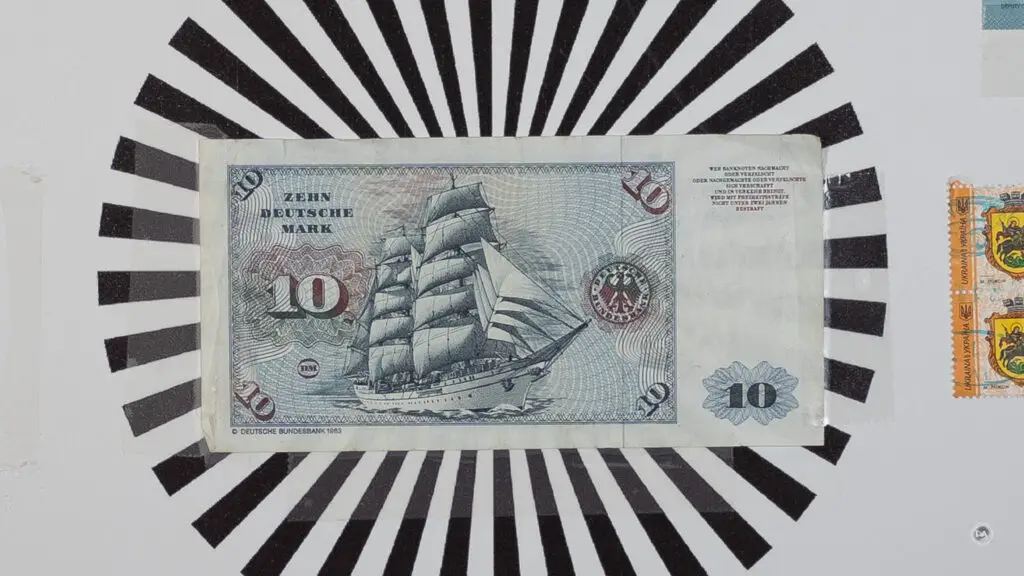

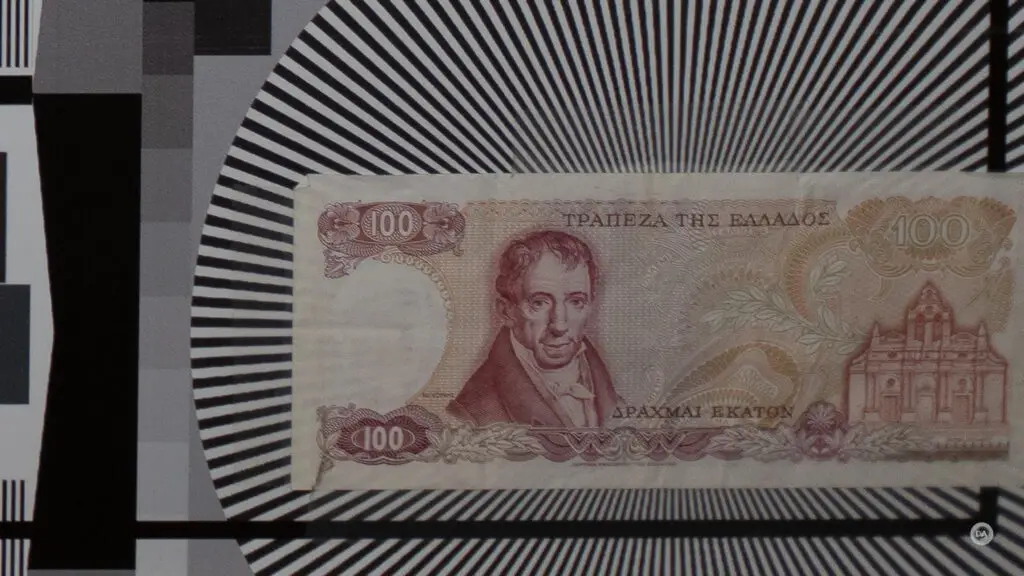
There’s a very strong showing in the center, and I feel like the midframe is a bit better than I expected. There’s fairly good detail entering the corner, though it fades right near the edge. Contrast in the corners is not exceptional.
Real world results composed in the rule of thirds zones look pretty great, with good detail and contrast.
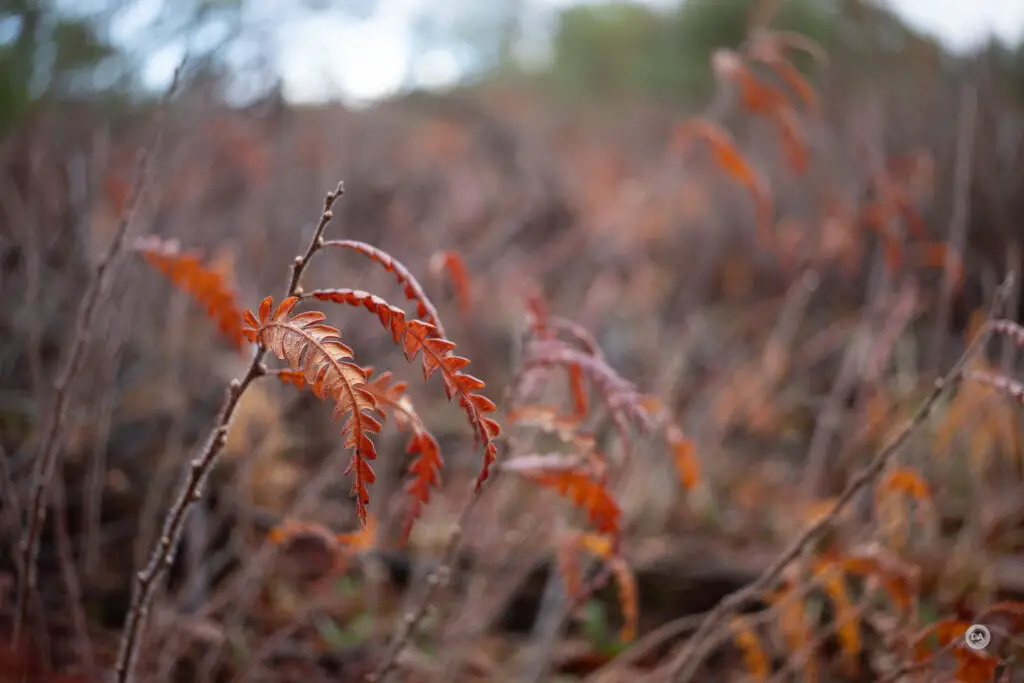
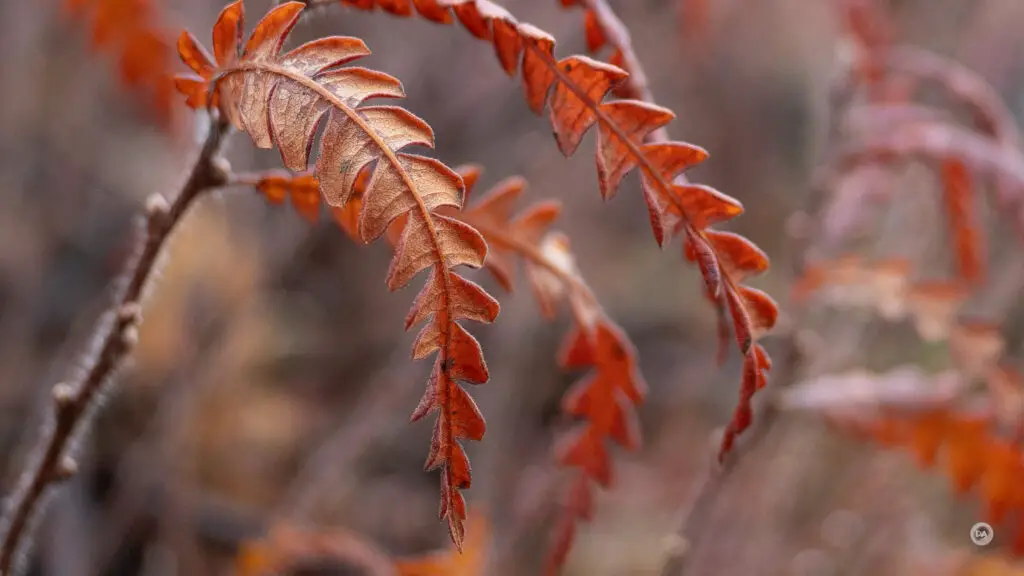
Stopping down to F4 shows little improvement in the already excellent center, but there is a fairly dramatic improvement in contrast in the mid-frame and corners.

By F5.6 detail across the frame is impressively good.
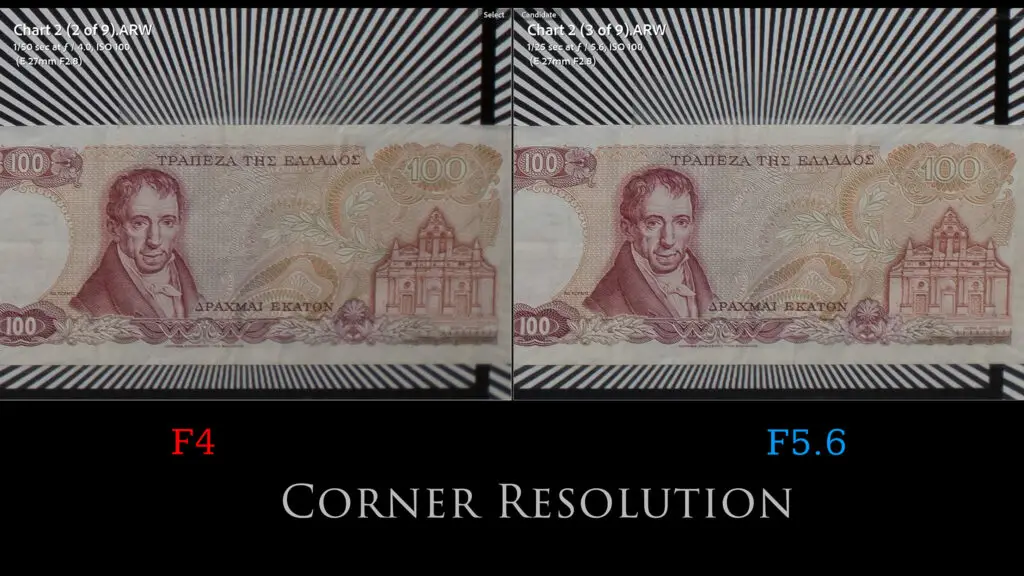
That tells us that there is plenty of sharpness potential at landscape apertures, and that proves the case. Landscape images have nice detail across the frame.
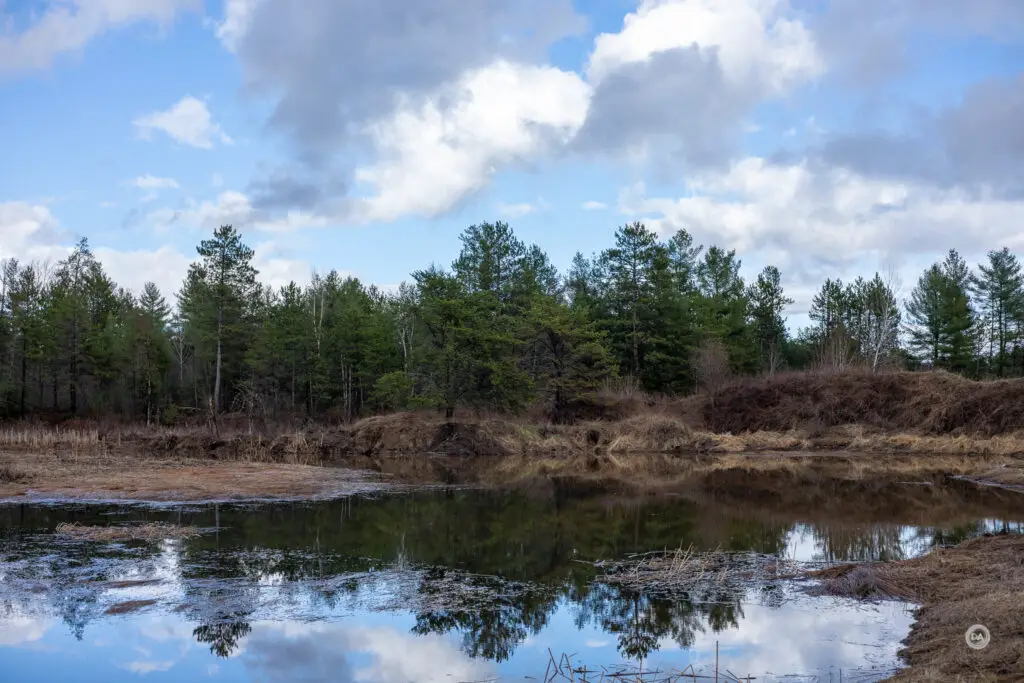
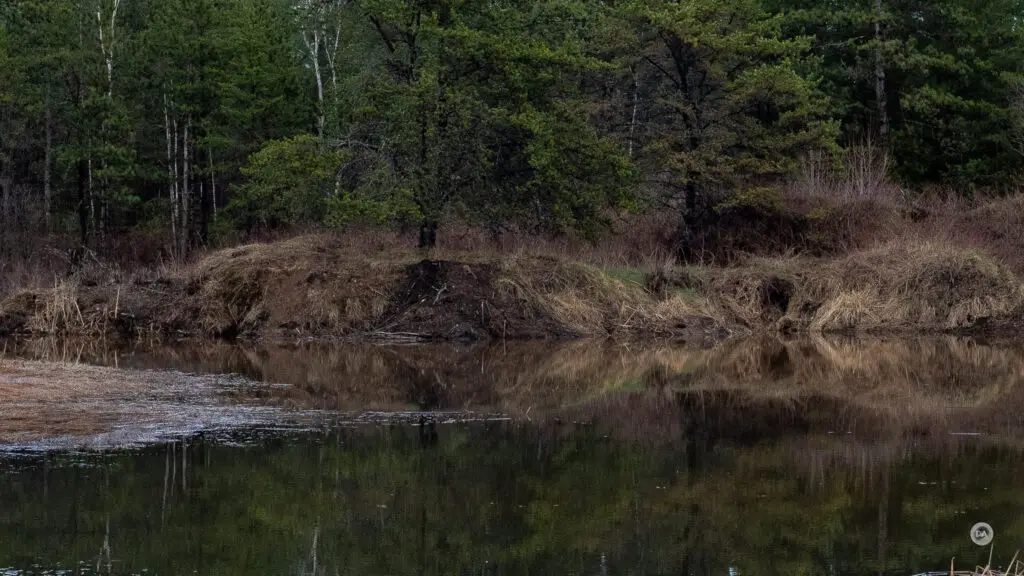

Sharpness peaks around F5.6, with F8 being very close to the same. Diffraction will start to soften the image after that, with a mild amount at F11 but a more obvious amount by F16:
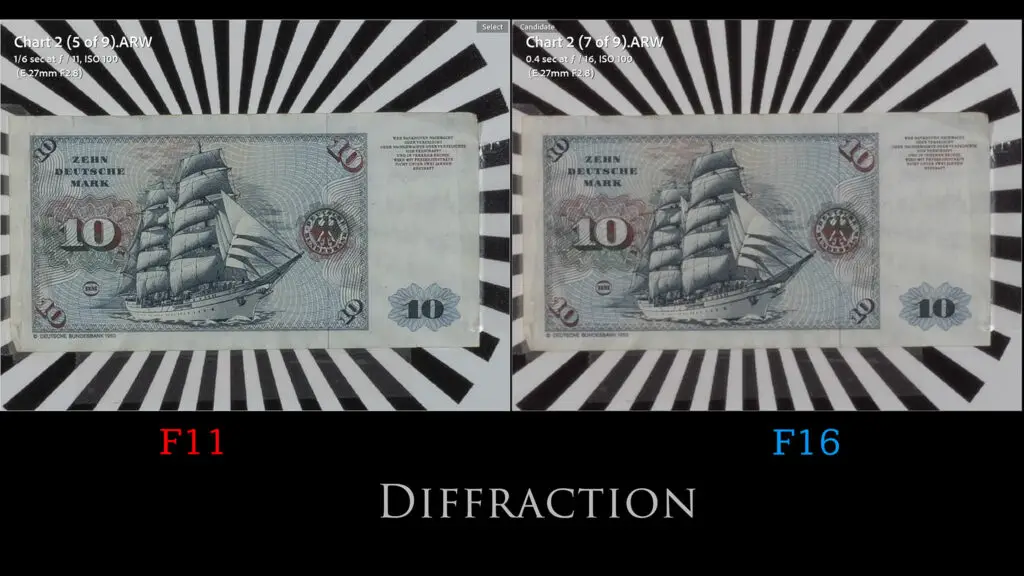
The 50mm F1.8 stood out for its lovely bokeh, but the 27mm isn’t quite as nice in this regard.
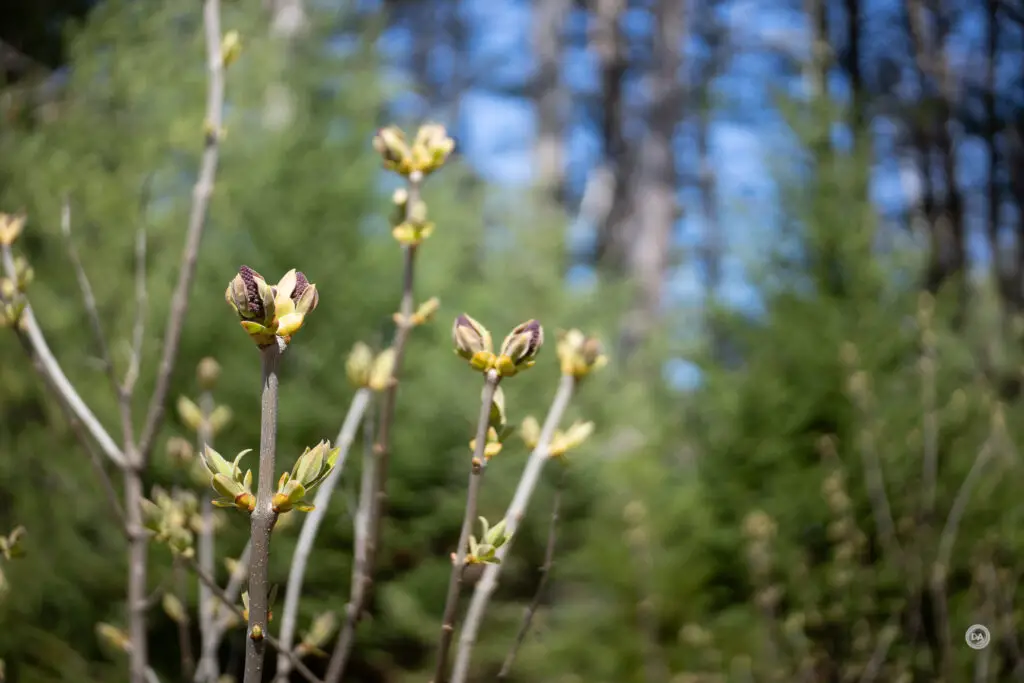
It’s not bad, but there is a bit more outlining than what I would like. There’s also a bit of a swirl effect due to the cat eye shape near the edges of the frame. You either like that look…or you don’t.

I did find that the subject isolation was fairly nice, as the good contrast in the center two thirds helps the subject pop.
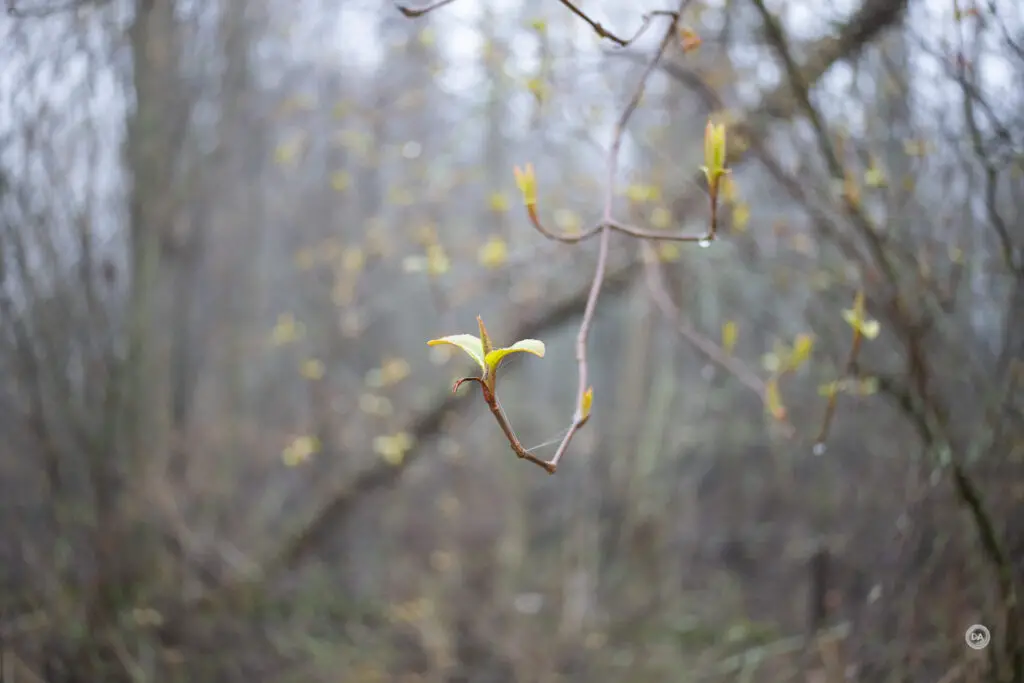
7Artisans can use some improvement to their lens coatings, as flare is definitely an issue. Certain angles will produce pronounced flare artifacts of varying kinds. It’s not completely destructive, but there’s no question that it is very obvious.

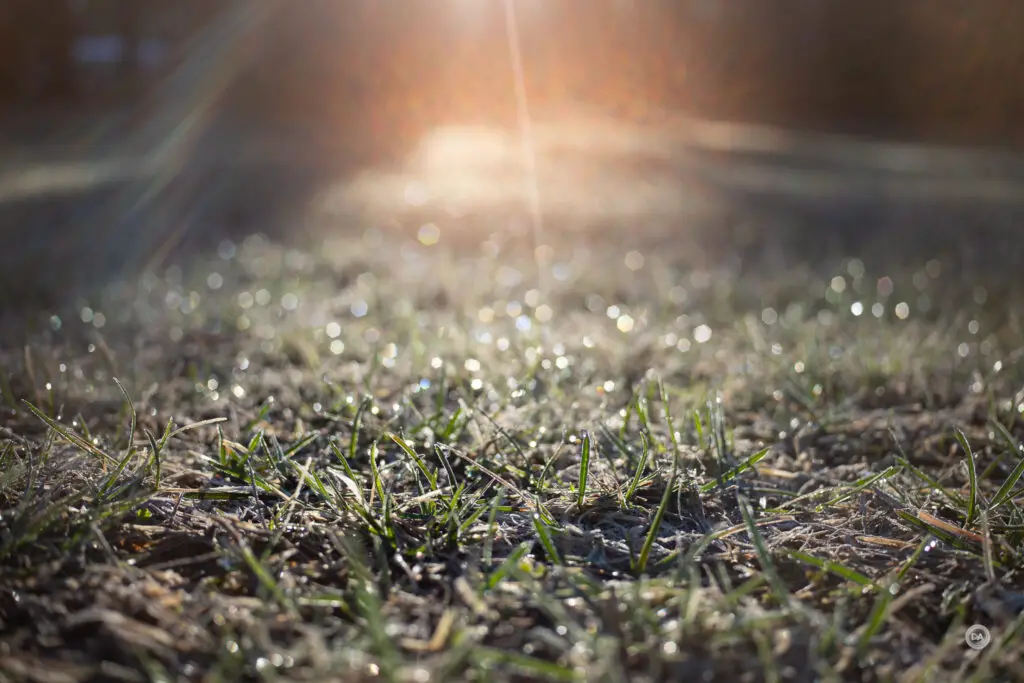
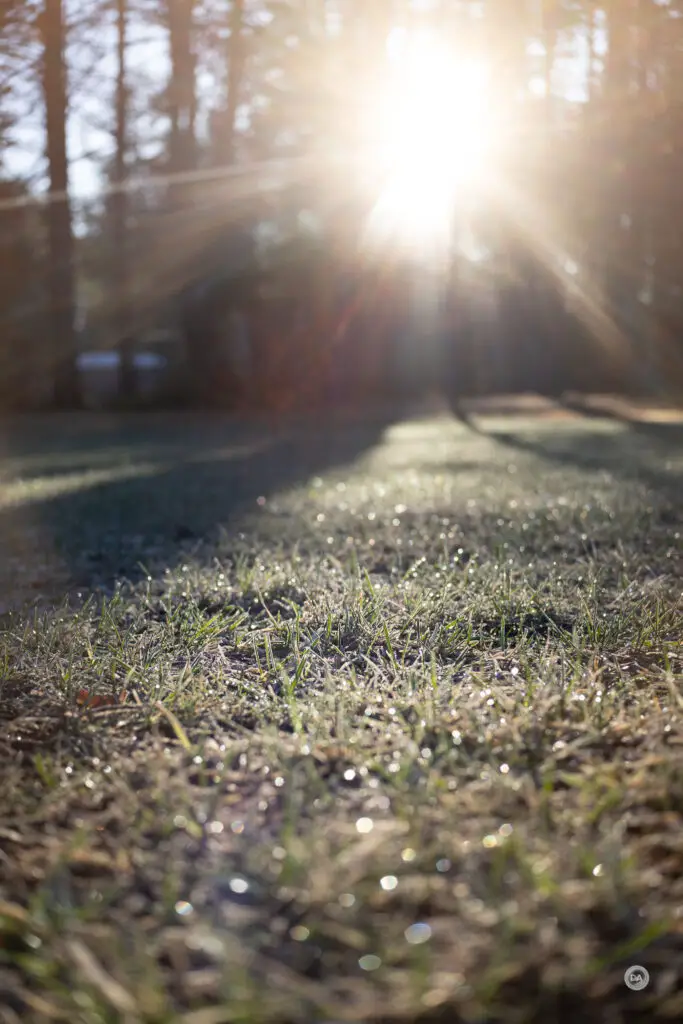

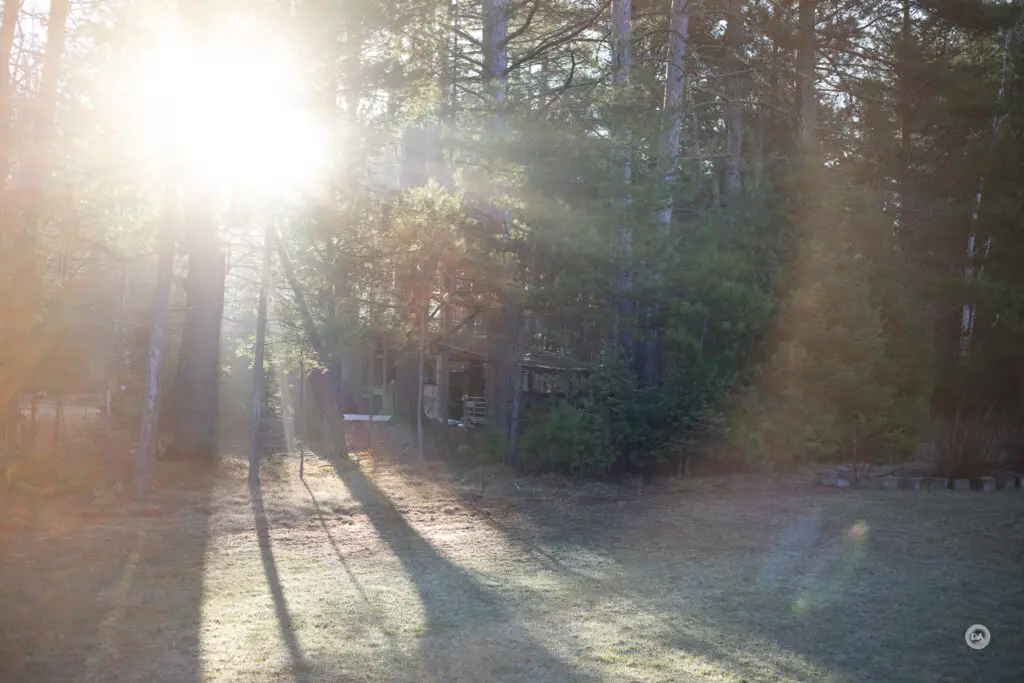

Some of those effects can be used artistically, but it will take a little skill to ensure that they are constructive rather than destructive.
The colors from the lens were interesting. I sometimes got a slightly lower contrast look that was quite cinematic.

In other settings contrast seemed strong.
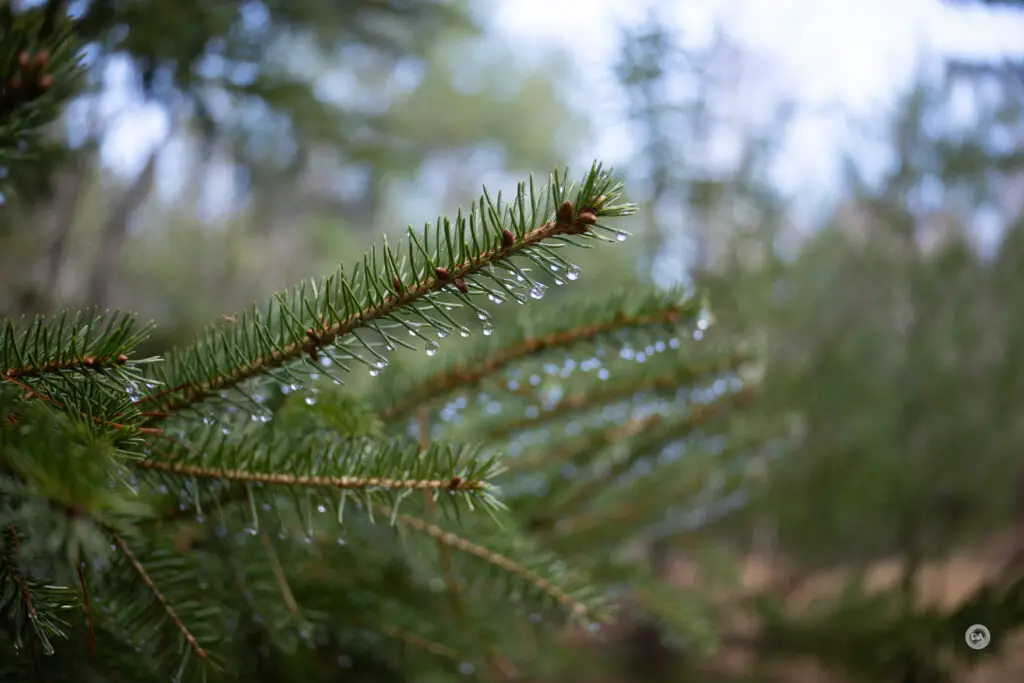
I suspect you’ll find that the look of your images will vary a fair bit depending on your shooting conditions. That may have something to do with the low element count and lack of coatings on the lens. I found that it behaved more like a vintage lens, and often I rather liked it. I felt like it had character and wasn’t the typical modern, perfectly corrected lens.
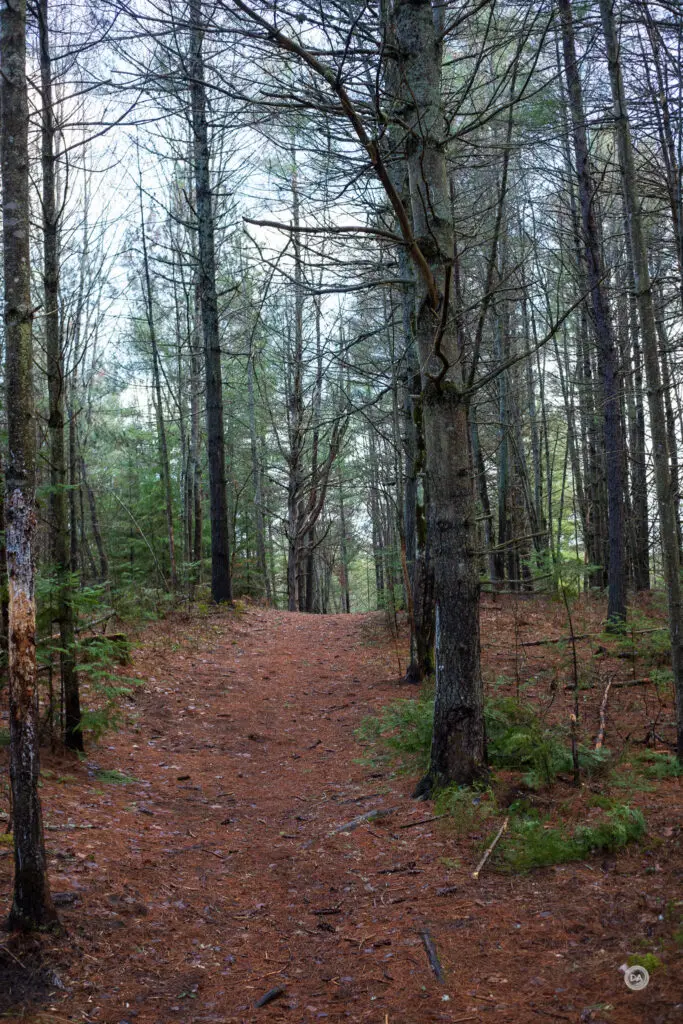
So not a flawless performance, but for a very inexpensive lens there’s a lot of positives here. If you’d like to see more image samples, check out the image gallery here.
Conclusion
I actually had a lot of fun with the inexpensive 7Artisans AF 27mm F2.8. I mostly said “yes” to reviewing it because it is an autofocus lens from a company that is still very new to making autofocus lenses, but I found that I often liked the unique look of images I got from the lens, and also appreciated its very small form factor that was very easy to throw in my bag as an extra to bring along.
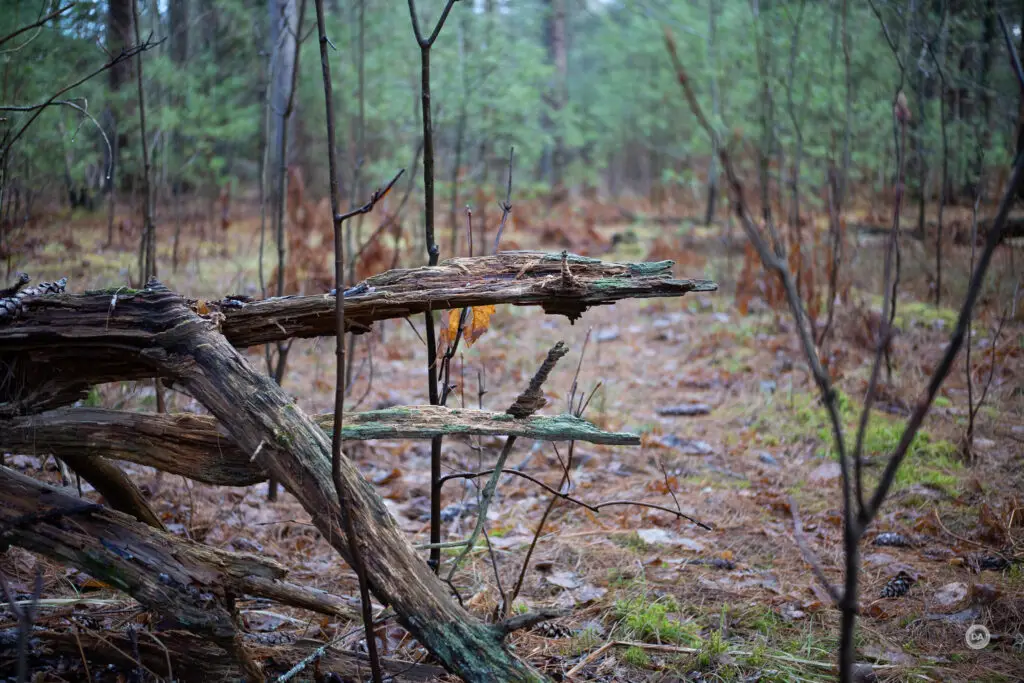
Though priced at just $129 USD, the AF 27mm F2.8 actually has a nice build quality, pretty decent autofocus, and, as we’ve just seen, surprisingly strong optics.
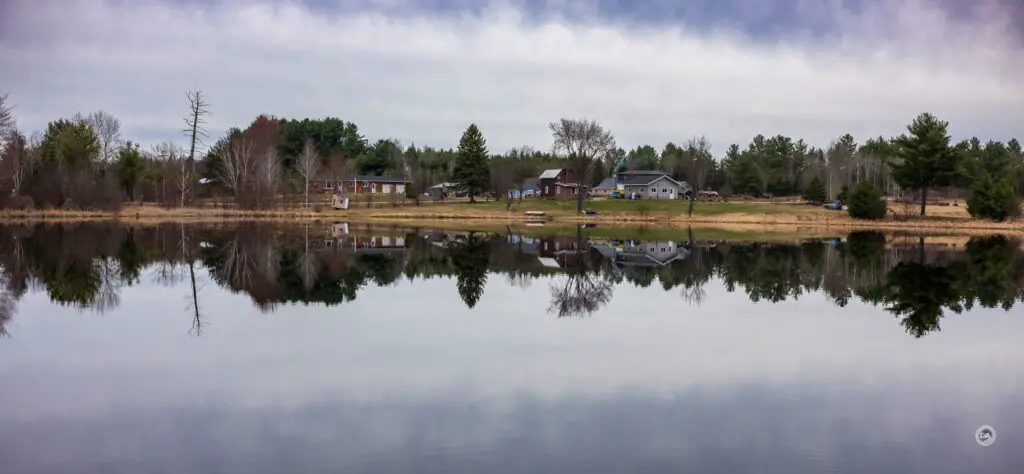
There’s no bells and whistles here, but this is actually a really good little lens for the money. If you want an inexpensive near “normal” lens for your Sony APS-C camera that is easy to bring along, the 7Artisans AF 27mm F2.8 is well worth your consideration.
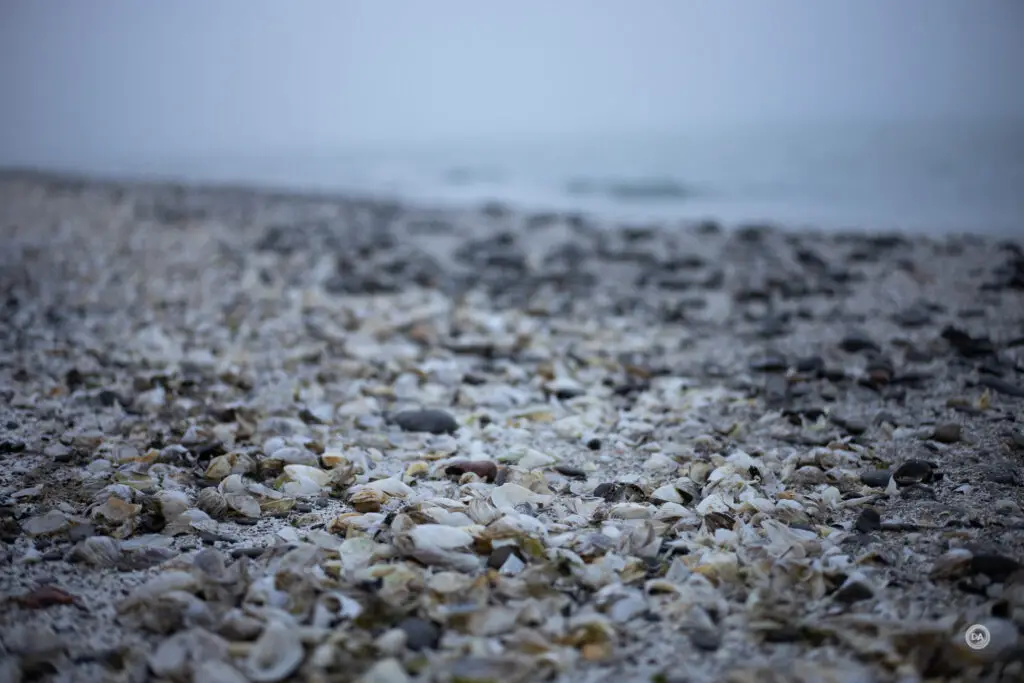
Pros:
- Nice looking lens with nice build
- USB-C port for firmware updates
- Good manual focus ring and experience
- Autofocus motor is quiet and fast
- Good sharpness wide open
- Excellent sharpness stopped down
- Fairly good bokeh
- Interesting look to images
- Good colors
- Very useful focal length
- Great price to performance ratio
Cons:
- No lens hood
- Flare issues
- Focal length doesn’t seem to report properly
- Sunstars a little ugly
_________________________________________________________________________
GEAR USED:
Purchase the 7Artisans AF 27mm F2.8 @ Vitopal | B&H Photo | Adorama | Amazon | Amazon Canada | Amazon UK | Amazon Germany
Purchase the 7Artisans AF 50mm F1.8 @ B&H Photo | Adorama | Amazon | Amazon Canada | Amazon UK | Amazon Germany
___________________________________________________________________
Purchase the Sony a7RV @ B&H Photo | Adorama | Amazon | Camera Canada | Sony Canada | Amazon Canada | Amazon UK | Amazon Germany
__________________________________________________________________
Purchase the Sony a6600 @ B&H Photo | Amazon | Camera Canada | Amazon Canada | Amazon UK | Amazon Germany | Ebay
Purchase the Sony a6400 @ B&H Photo | Amazon | Amazon Canada | Amazon UK | Amazon Germany | Ebay
_________________________________________________________________
Want to support this channel? Use these affiliate links to shop at: B&H Photo | Amazon | Adorama | Camera Canada | Amazon Canada | Amazon UK | Ebay | Make a donation via Paypal
Buy DA Merchandise https://bit.ly/TWIMerch
Keywords: 7Artisans, 7Artisans 27mm, AF, 27mm, F2.8, STM, 7Artisans AF 27mm F2.8, Full APS-C, Review, Sony a6700, a6000, a6400, Sony a7RV, Review, Hands On, Dustin Abbott, Real World, Comparison, Sharpness, Bokeh, Flare Resistance, Autofocus, Image Quality, Sample Images, Video, Photography, let the light in, weathersealing, #letthelightin, DA
DISCLAIMER: This article and description contains affiliate links, which means that if you click on one of the product links, I’ll receive a small commission. As an Amazon Associate I earn from qualifying purchases.










 GOOVIS ART Head Mounted Display Review
GOOVIS ART Head Mounted Display Review 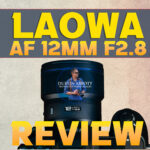 Laowa AF 12mm F2.8 Zero D Review (Z-Mount)
Laowa AF 12mm F2.8 Zero D Review (Z-Mount)  Nikkor Z 35mm F1.2 S Review
Nikkor Z 35mm F1.2 S Review  Kase AF 85mm F1.4 Review
Kase AF 85mm F1.4 Review 



2 thoughts on “7Artisans AF 27mm F2.8 Review”